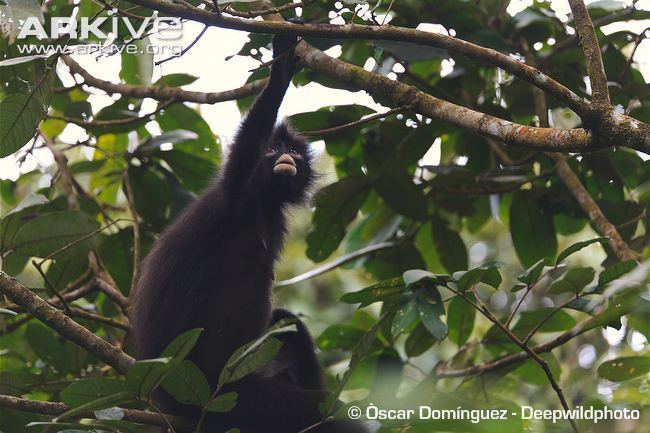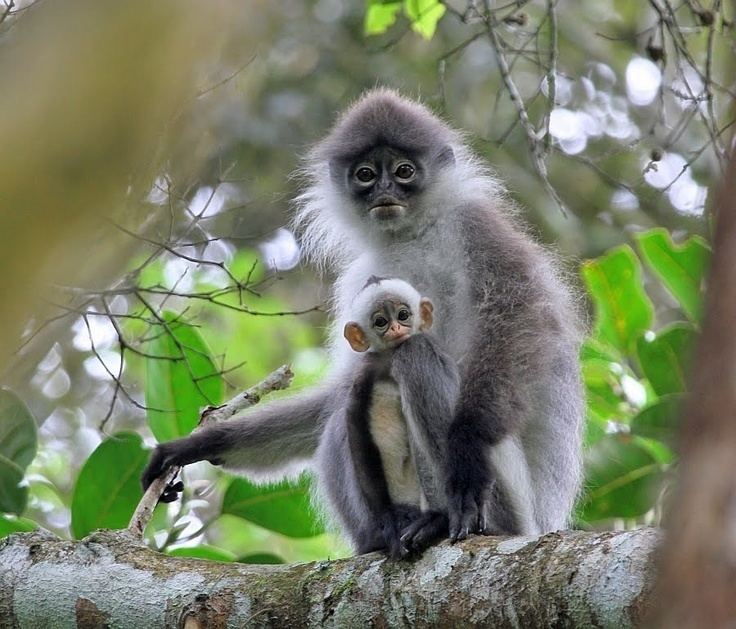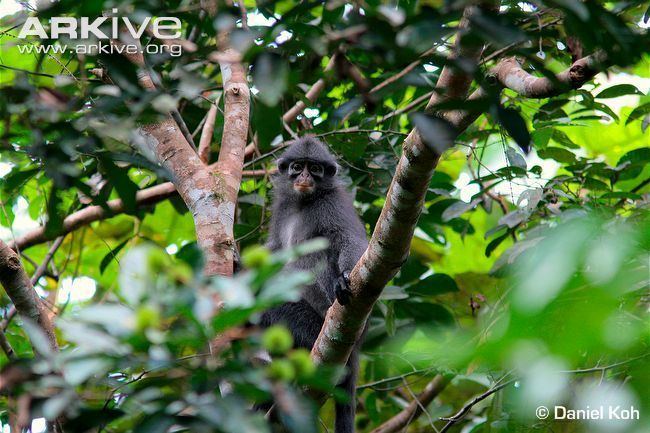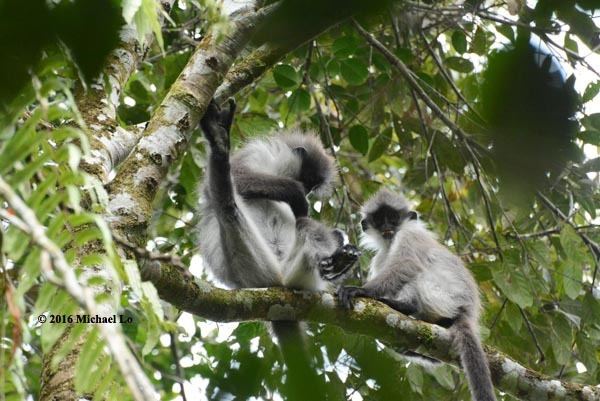Kingdom Animalia Order Primates Genus Presbytis Higher classification Surili | Phylum Chordata Family Cercopithecidae Scientific name Presbytis femoralis Rank Species | |
 | ||
Similar Hose's langur, Southern plains gray langur, Surili, Maroon leaf monkey, White‑thighed surili | ||
The banded surili (Presbytis femoralis), also known as the banded leaf monkey or banded langur, is a species of primate in the family Cercopithecidae. It is endemic to the Thai-Malay Peninsula and the Indonesia island of Sumatra. It is threatened by habitat loss.
Contents

Taxonomy
Three subspecies, femoralis (nominate), robinsoni and percura, are currently recognized, but the taxonomy is complex and disputed, and it has also included P. natunae, P. siamensis and P. chrysomelas as subspecies, or alternatively all these (including P. femoralis) have been considered subspecies of P. melalophos. It is diurnal and eats fruit. Of the subspecies currently recognized, P. f. femoralis lives in Singapore and Johor in the southern Malay Peninsula, P. f. robinsoni lives in the northern Malay Peninsula, including southern Burma and Thailand, and P. f. percura lives in east-central Sumatra.

In the past, some scientists, such as Oates, Davies and Delson (1994), regarded P. femoralis as a subspecies of the Sumatran surili (Presbytis melalophos). Until 1984, the white-thighed surili (Presbytis siamensis) was considered a subspecies of the banded surili. This would have covered the Natuna Island surili (Presbytis natunae), which was only deemed to be separate from the white-thighed surili in 2001. The white-thighed surili has a range in Malaysia between the ranges of P. f. femoralis and P. f. robinsoni. In Thailand, individual white-thighed suurilis are sometimes found within the range of P. f. robinsoni.
Description

The banded surili is 432 to 610 millimetres (17.0 to 24.0 in) long, excluding the tail, with a tail length of 610 to 838 millimetres (24.0 to 33.0 in). It weighs 5.9 to 8.2 kilograms (13 to 18 lb). It has dark fur on the back and sides with lighter fur on the underside. P. f. femoralis, sometimes known as Raffles' banded langur, has particularly dark fur on top and particularly white fur on the belly. P. f. robinsoni, sometimes known as Robinson's banded langur, is more grey on the underside.
Habits

The banded surili is diurnal and arboreal, preferring rainforest with trees of the family Dipterocarpaceae. It lives in both primary and secondary forest, and also in swamp forests and mangrove forests, and even in rubber plantations. It moves primarily by walking on all fours and by leaping.
According to wildlife researcher Charles Francis, it typically lives in groups of 3 to 6. However, a study in Perawang, Sumatra found an average group size of 11 monkeys in mixed-sex groups. The latter study also found an average ratio of 1 adult male to 4.8 adult females in mixed-sex groups and a ratio of 1.25 adult monkeys for every immature monkey in mixed-sex groups. It also found an average range size for a group of 22 hectares, and an average population density of 42 monkeys per square kilometer. Other studies found somewhat smaller home ranges, of between 9 and 21 hectares.
The banded surili has a primarily vegetarian diet. The Perawang study found that nearly 60% of the diet consisted of fruits and seeds. Another 30% consisted of leaves, primarily young leaves. A different study found that fruit made up 49% of the diet. Unlike some other monkeys, such as the long-tailed macaque, the banded langur destroys the seeds it eats, and so it is not a significant factor in dispersing seeds.
The banded surili does not have a specific breeding season. Infants are weaned at the age of 9 to 10 months old. The infants often benefit from alloparenting for up to the first 3 months of their lives. The Perawang study found that in the first month of their lives, infants are held by adults other than their mother about a third of the time. Males leave their natal group before reaching maturity.
The call of mature males sounds like "ke-ke-ke." Mammalogist Ronald M. Nowak described the species' alarm call as "a harsh rattle followed by a loud chak-chak-chak-chak."
Singapore population
The banded surili was once common throughout the island of Singapore but that population is now critically endangered with approximately 40 individuals left in the Central Catchment Nature Reserve. The species was formerly found in the Bukit Timah Nature Reserve, but that population died out in 1987. The last individual to live in Bukit Timah is now displayed at the Raffles Museum of Biodiversity Research. The Central Catchment population had declined to as few as 10-15 monkeys before recovering to about 40 by 2012. The main threat to the Singapore population appears to be habitat loss. The Singapore population feeds from at least 27 plant species. The National Biodiversity Centre, in partnership with the Evolution Lab of the National University of Singapore, launched an ecological study to determine suitable conservation strategies. A 2012 found extremely low genetic diversity within the remaining Singapore population and suggested that translocation of banded surilis from Malaysia may be necessary to provide the Singapore population with enough genetic diversity to survive in the long run.
An earlier study had found that at least six infants had been born in the Singapore population over the years 2008-2010, with at least one birthing season occurring regularly in June and July. That study found low infant mortality, with several infants surviving at least to seven months old. The study also found that the infant coloration of the Singapore population is indistinguishable from that of the Johor, Malaysia population, with infants having white fur with a black stripe down the back from the head to the tail, crossed by another black stripe across the shoulders and to the forearms.
